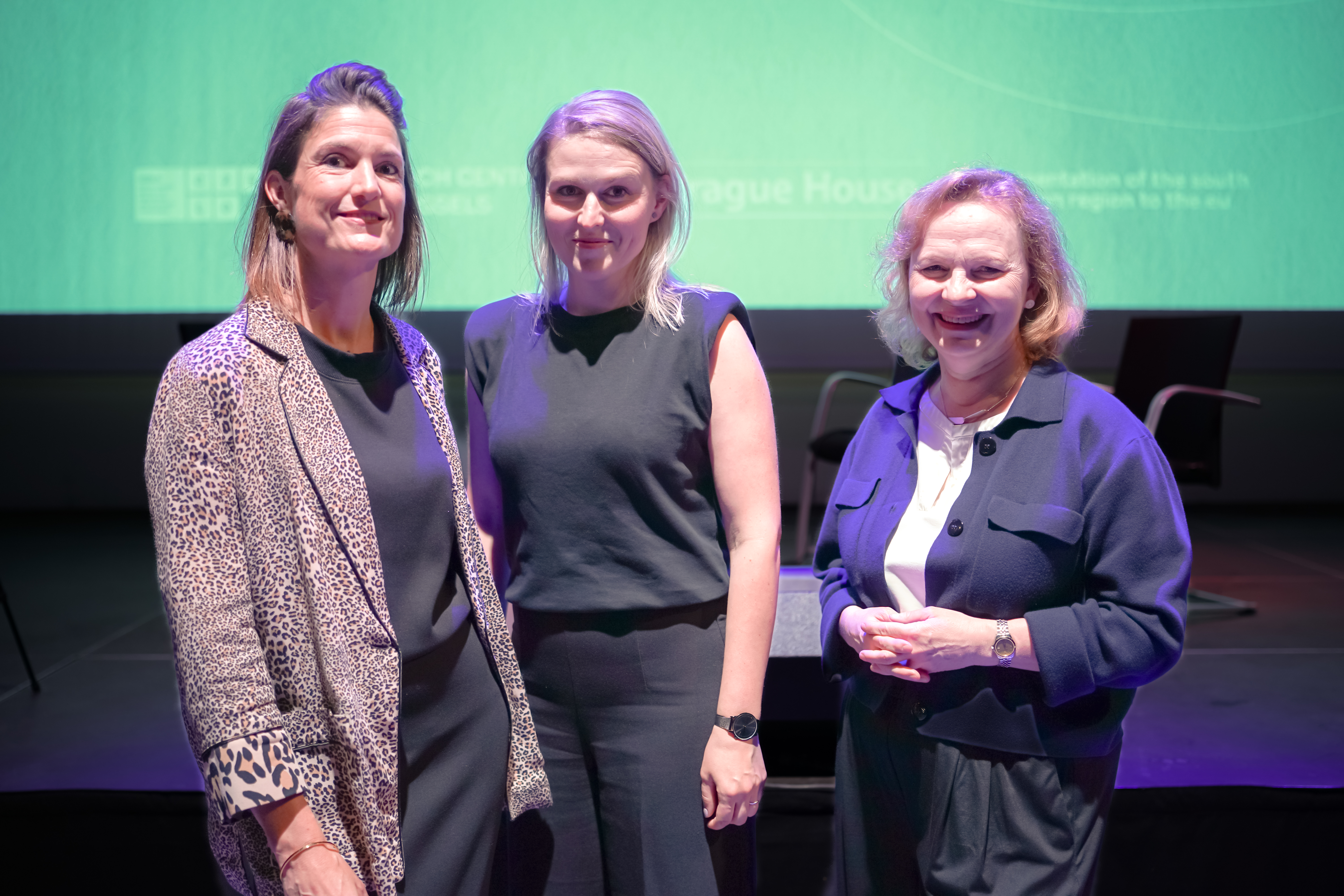Tactical urbanism in practice. Insights from the Second Science Café of the year
The discussion evening took place in the Pilar premises of the VUB University in Brussels and attracted around 90 participants.
On 4 June, the second Science Café of the year delved into the theme of tactical urbanism. The event featured distinguished speakers Kristina Ullmannová from the Prague Institute of Planning and Development (IPR Prague) and Marie Joja from Brno University of Technology, who is also the founder of the Archipop project. Lieve De Cock, the founder of the LiPS (Life.People.Space) initiative, moderated the discussion. The event was co-organized by the CZELO office in collaboration with the Prague House in Brussels, the Representation of the South Moravian Region to the EU, and the Czech Center Brussels. The discussion evening took place in the Pilar premises of the VUB University in Brussels.
The evening began with a presentation on the concept and definition of tactical urbanism. This approach to urban planning emphasizes creating an inclusive urban environment for all residents, irrespective of age or social status. Additionally, tactical urbanism aims to address global challenges such as climate change through innovative and community-focused solutions.
In the first part of the discussion, various tools and techniques for implementing tactical urbanism—also known as pop-up urbanism or guerilla urbanism—were introduced. The conversation emphasized the need to change our perspective on urban space. Tactical urbanism allows for experimentation and highlights the importance of "placemaking" and engaging with the local community. The goal is to design urban spaces that benefit both permanent residents and temporary visitors. Marie Joja, founder of the Archipop project, showcased methods for applying tactical urbanism, including "creative brainstorming." This approach focuses on effective communication with diverse community members and incorporating their feedback into urban planning. As Joja noted, "a good city is like a good party. People stay longer because they enjoy it.”

In the second part of the discussion, Kristina Ullmannová showcased the work of IPR Prague. It aims to create spaces that are inclusive, safe, and viable. However, they encounter obstacles such as conflicting interests among different groups and varying individual needs. Reaching consensus among stakeholders is often challenging, preventing the implementation of structural changes. Ullmannová also highlighted specific projects and examples of best practices, including the revitalization of Mariánské náměstí in Prague, the transformation of Rohan and Libeň Island, and the "Prague Chairs & Tables" initiative.
The discussion also explored the role of research within the framework of tactical urbanism. The speakers noted that the academic sector often operates in a highly theoretical manner. The panelists agreed that tactical urbanism does not require additional methods and theories. Another topic addressed was how to effectively communicate about tactical urbanism with diverse groups, including children and the elderly. In conclusion, the guests shared examples of successful practices from European cities like Copenhagen, Rotterdam, and Bratislava.